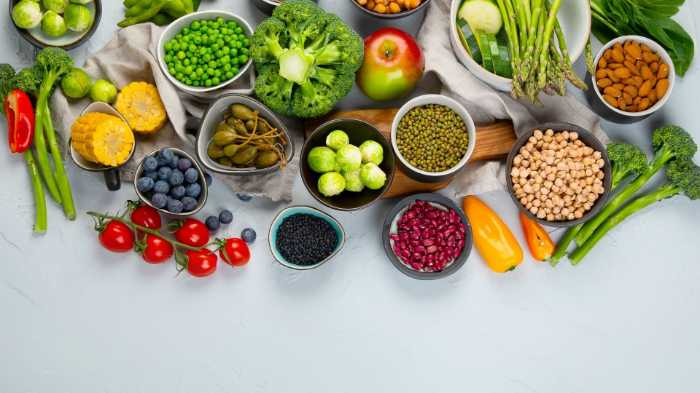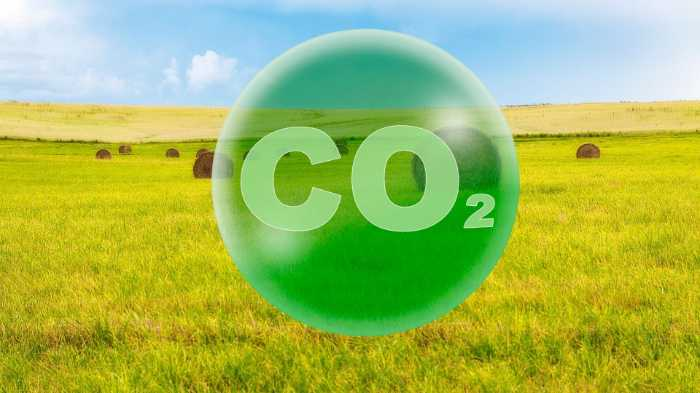
Did you know that the way we eat has a significant impact on the environment? According to the Food and Agriculture Organization, the food sector is responsible for about one-fifth of global greenhouse gas emissions. This is largely due to things like deforestation, fertilizer use, and livestock production. But there are things we can do to reduce our carbon footprint, like eating low-carbon foods. In this blog post, we will discuss what low-carbon foods are and why they are so important for sustainable eating! With millions of households serving billions of meals, trying some new once a week can have a significant positive impact on our future.
- What is a low-carbon diet?
- What are the benefits of a low-carbon diet?
- 1. Emphasizes plant-based foods
- 2. Reduces animal-based products
- 3. Reduces carbon emissions
- 4. Improves gut health and boosts immunity
- 5. Consumes less water
- 6. Supports locally grown food
- How to reduce your carbon footprint with food?
- 1. Choose local and organic foods
- 2. Reduce food waste
- 2. Composting food waste
- 3. Eat less meat
- 4. Educate yourself and spread awareness
- A list of low-carbon foods to try
- Conclusion
- FAQs
What is a low-carbon diet?
A low-carbon diet is one that minimizes your contribution to climate change. The biggest driver of climate change is the burning of fossil fuels, which releases carbon dioxide into the atmosphere. Our diets have a big impact on our GHG emissions, as the growing, processing, and transportation of food all involve the use of fossil fuels. By eating locally grown food, cutting down on meat and dairy consumption, and wasting less food, we can all make a difference. A low-carbon diet is not only good for the planet, but it can also be healthier and more sustainable in the long run.
What are the benefits of a low-carbon diet?
There are several benefits of a low-carbon diet:
1. Emphasizes plant-based foods

A low-carbon diet can have many benefits for both our health and the environment. One key benefit is that it emphasizes plant-based foods. Studies have shown that a plant-based diet can have numerous health benefits, including reducing the risk of heart disease, obesity, and type 2 diabetes. Plant-based foods also tend to lower blood pressure and cholesterol levels. In addition, plant-based foods are often lower in calories and fat than animal-based products, making them a good choice for those looking to lose weight or eat a healthier diet.
Furthermore, plant-based foods tend to be more environmentally sustainable than animal-based foods. They require less land, water, and energy to produce and generate fewer greenhouse gas emissions. As we become more aware of the impact, our diets have on our health and the planet, choosing to eat more plant-based foods is an important step we can all take toward creating a more sustainable future.
2. Reduces animal-based products

Reducing the amount of animal-based foods in your diet is one of the most effective ways to lower your carbon footprint. Animal agriculture is responsible for a large share of global greenhouse gas emissions, and cattle are particularly inefficient in converting food into energy. In fact, beef production requires 8 times more land and 22 times more water than chicken production. Furthermore, grazing animals release methane, a powerful greenhouse gas, into the atmosphere through their digestive system. So by eating less meat, you can help to reduce the environmental impact of animal agriculture.
3. Reduces carbon emissions

A low-carbon diet is not only better for your health but also for the environment. The average person’s diet is responsible for approximately 2.5 tons of carbon dioxide emissions each year, but a low-carbon diet can reduce this number by up to 1.5 tons. That means that by switching to a low-carbon diet, you could personally reduce your carbon footprint by almost 60%. And as more and more people make the switch to a low-carbon diet, the impact on reducing emissions will be even greater.
4. Improves gut health and boosts immunity

A low-carbon diet not only helps to improve gut health but can also boost immunity. The gut is home to a diverse community of bacteria, many of which are essential for human health. However, the composition of the gut microbiome can be easily disturbed, leading to disruptions in digestion and metabolism. A low-carbon diet can help to promote a healthy gut microbiome by providing the right mix of nutrients that support the growth of beneficial bacteria.
In addition, a low-carbon diet can also help to boost immunity by reducing inflammation throughout the body. Studies have shown that a high intake of plant-based foods is associated with lower levels of inflammation, and this is thought to be one of the mechanisms by which a low-carbon diet protects against chronic diseases.
Finally, many people find that a plant-based diet is more sustainable in the long term than a meat-based diet. For all these reasons, a low-carbon diet is an excellent choice for those looking to improve their health and reduce their impact on the environment.
5. Consumes less water

According to a report from the United Nations, it takes about 2,400 gallons of water to produce one pound of beef. In contrast, it takes only 244 gallons of water to produce one pound of wheat. This difference is due to the fact that it takes a great deal of water to irrigate pastureland and grow feed for livestock. As a result, diets that include large amounts of meat and dairy products tend to place a significant strain on water resources. Low-carbon diets, on the other hand, consume far less water. This is because they require less irrigation and land for growing crops. As the world’s population continues to grow, it is becoming increasingly important to find ways to conserve water. Low-carbon diets offer one way to do this by reducing the amount of water required for food production.
6. Supports locally grown food

One of the benefits of a low-carbon diet is that it supports locally grown food. By eating locally grown food, you are reducing the amount of transportation needed to bring the food to you. This, in turn, reduces the emissions from transportation, which is a major source of greenhouse gases. In addition, when you buy local food, you are supporting farmers in your community. This helps to create jobs and keep money circulating within the local economy. Finally, buying local food helps to ensure that you are getting fresh, nutritious food that has not been transported long distances. So not only is a low-carbon diet good for the planet, but it’s also good for your health and your local economy.
How to reduce your carbon footprint with food?
Many people are interested in reducing their carbon footprint, and one way to do that is through the food we consume. The growing and producing of food create carbon emissions that contribute to climate change. However, there are some things we can do to reduce our impact.
1. Choose local and organic foods
Consumer choices have a significant impact on the carbon footprint of the global food system. When possible, choose local and organic foods. These items have a smaller carbon footprint because they don’t have to be shipped as far, and they are produced without the use of harmful chemicals. Not only does it produce fewer food emissions, but it also supports local farmers and an organic food system and can be healthier for you.
2. Reduce food waste
Did you know that up to 40% of the food in the United States is wasted? That means that every year, we throw away billions of pounds of perfectly good food. Not only is this a huge waste of resources, but it also has a major impact on the environment. When food decomposes, it produces methane, a powerful greenhouse gas. In fact, food waste is responsible for approximately 8% of total methane emissions. Reducing food waste is one of the easiest ways to reduce your carbon footprint. Here are a few simple tips:
- Store food properly to extend its shelf life.
- Learn to love leftovers.
- Donate excess food.
By following these simple tips, you can help reduce food waste and make a big difference in the environment.
2. Composting food waste
You can also reduce your carbon footprint by composting food waste. This helps to keep organic matter out of landfills, where it emits carbon dioxide equivalents, including methane, a greenhouse gas that is more potent than carbon dioxide. Composting can be done at home or through municipal programs. At-home composting requires a bin or mound in which to compost food scraps and yard waste. The most important thing to remember when composting at home is to maintain a balance of green (food waste) and brown (yard waste) materials.
Municipal composting programs collect food scraps from residents and commercial businesses and send them to large-scale composting facilities. These programs generally require little effort on the part of residents. By making simple changes to your diet, you can help reduce your carbon footprint, reduce global warming, and make a positive impact on the environment.
3. Eat less meat
Meat production is a major source of GHG emissions. In fact, it accounts for 14.5 percent of all human-induced emissions, according to the Food and Agriculture Organization of the United Nations. One of the primary reasons for this high level of emissions is that livestock is often fed on grain and soybeans that require large amounts of fossil fuels to produce. In addition, cows and other ruminants release methane, a powerful greenhouse gas, as they digest their food. As a result, reducing meat consumption is one of the most effective ways to lower carbon footprint.
There are a number of ways to eat less meat without completely giving it up. One option is to simply eat smaller portions of meat when you do have it. Another is to choose leaner cuts of meat, which have lower emissions per gram than higher fat options. You can also add more plant-based foods to your diet, such as beans, lentils, and tofu. Finally, you can seek out meat that has been produced using sustainable practices, such as grass-fed beef or chicken that has been raised without antibiotics. By making even small changes to your diet, you can make a big difference in the fight against climate change.
So, next time you’re at the grocery store, keep these tips in mind to help reduce your carbon footprint.
4. Educate yourself and spread awareness
One of the most effective ways to reduce your carbon footprint is to educate yourself about the environmental impact of your food choices and then work to spread that awareness to others. Of course, changing your diet is not always easy or realistic, but simply becoming more aware of the issue can help you make more sustainable choices when possible. You can also help offset your carbon footprint by supporting businesses that are working to reduce their own impact on the environment. As more and more people become conscious of their own impact on the planet, we can collectively make a difference in the fight against climate change.
A list of low-carbon foods to try
Carbon footprints are often used as a way of measuring the environmental impact of an individual or household. Foods that have a high carbon footprint are typically those that require a lot of energy and resources to produce, transport, and store. Red meat, for example, has a relatively high carbon footprint due to the emissions involved in animal husbandry. Processed foods and those that come from far away also tend to have a larger carbon footprint. However, there are plenty of low-carbon foods that are delicious and easy to find. Here are just a few:
- Fruits and vegetables that are local and in season
- Eggs from pasture-raised chickens
- Fish that is wild-caught and sustainably sourced
- Beans, lentils, and other legumes
- Whole grains like oats, quinoa, and brown rice
- Nuts and seeds
- Plant-based oils like olive oil or coconut oil
By making an effort to include more low-carbon foods in your diet, you can help to reduce your environmental impact. Not only is it good for the planet, but it’s also good for your health!
Conclusion
In conclusion, making small changes to your diet in order to reduce your carbon footprint is a great way to make a positive impact on the environment. There are many easy and delicious ways to do this, so there’s no excuse not to get started! If you’re looking for some inspiration, be sure to check out our list of low-carbon foods given above.
FAQs

What are food miles?
Food miles are a measure of the distance food has traveled from the point of production to the point of consumption. This concept has gained popularity in recent years as a way of measuring the environmental impact of the food system. Because transportation is a major source of GHG emissions, food that has traveled a long distance is often considered to be more environmentally damaging than food that is produced locally. However, there are many other factors to consider when evaluating the environmental impact of food, such as water use, land use, and packaging. As a result, the concept of food miles should be considered in conjunction with other factors in order to get a comprehensive picture of the sustainability of our food system.
What greenhouse gases contribute to global warming?
Greenhouse gases like carbon dioxide and methane trap heat in the atmosphere, causing the Earth’s temperature to rise. This process is known as global warming. As the level of greenhouse gases continues to increase, the Earth’s temperature is expected to rise even further, leading to potentially catastrophic consequences for the planet and its inhabitants.
What is manure management?
Manure management is the process of handling, storing, and using manure in a way that minimizes environmental impact. This includes keeping track of how much manure is produced, ensuring it is stored properly, and using it as fertilizer in a way that does not pollute water or damage soil. Manure management is an important part of sustainable agriculture and can help to protect the environment and improve crop yields.
What is the most energy-intensive food?
The most energy-intensive food is beef. It takes approximately 28 calories of energy to produce 1 gram of beef. This is more than double the amount of energy required to produce chicken. Beef production also results in higher GHG emissions than other types of meat. Therefore, if you are looking to reduce your carbon footprint, you may want to consider eating less beef.
Do animal products have a greenhouse impact?
Animal products can have a significant greenhouse gas impact, depending on the type of animal and how it is raised. For example, beef cattle emit methane, a potent greenhouse gas, while poultry emits carbon dioxide. In addition, the way animals are raised can also affect their greenhouse gas emissions. For example, pasture-based grazing systems generally have lower emissions than feedlot systems. Consequently, the greenhouse gas impact of animal products can vary significantly.
What food has the most saturated fat?
The food with the most saturated fat is different for every person. It all depends on the person’s diet and what they are eating. However, in general, foods high in saturated fat include red meat, whole milk, butter, cheese, and ice cream. These foods should be eaten in moderation to avoid health problems such as heart disease and obesity.
Is nitrous oxide a greenhouse gas?
Nitrous oxide is a greenhouse gas that is produced by natural and human activities. Greenhouse gases trap heat in the atmosphere and contribute to global warming. Nitrous oxide is a powerful greenhouse gas, with a global warming potential of 298 times that of carbon dioxide. The main source of nitrous oxide emissions in agricultural activities, such as fertilizer use and animal manure management. Other sources include industrial processes, vehicle exhaust, and waste incineration. Reducing nitrous oxide emissions is essential to mitigating climate change. Various strategies have been proposed, such as more efficient fertilizer application and improved livestock husbandry practices. Implement these strategies on a global scale in order to reduce the impact of climate change.

Dean Emerick is a curator on sustainability issues with ESG The Report, an online resource for SMEs and Investment professionals focusing on ESG principles. Their primary goal is to help middle-market companies automate Impact Reporting with ESG Software. Leveraging the power of AI, machine learning, and AWS to transition to a sustainable business model. Serving clients in the United States, Canada, UK, Europe, and the global community. If you want to get started, don’t forget to Get the Checklist! ✅
